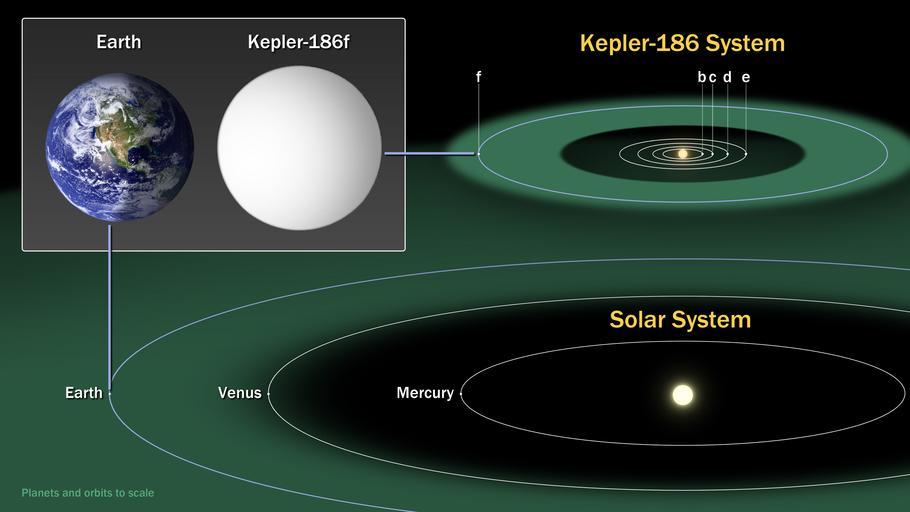MAKE A MEME
View Large Image

| View Original: | Kepler186f-ComparisonGraphic-20140417 improved.jpg (4534x2550) | |||
| Download: | Original | Medium | Small | Thumb |
| Courtesy of: | commons.wikimedia.org | More Like This | ||
| Keywords: Kepler186f-ComparisonGraphic-20140417 improved.jpg en Kepler-186 and the Solar System http //www nasa gov/ames/kepler/kepler-186-and-the-solar-system http //www jpl nasa gov/news/news php release 2014-119 http //www jpl nasa gov/spaceimages/details php id PIA18000 The diagram compares the planets of our inner solar system to Kepler-186 a five-planet star system about 500 light-years from Earth in the constellation Cygnus The five planets of Kepler-186 orbit an M dwarf a star that is is half the size and mass of the sun The Kepler-186 system is home to Kepler-186f the first validated Earth-size planet orbiting a distant star in the habitable zone ”a range of distance from a star where liquid water might pool on the planet's surface The discovery of Kepler-186f confirms that Earth-size planets exist in the habitable zones of other stars and signals a significant step toward finding a world similar to Earth The size of Kepler-186f is known to be less ten percent larger than Earth but its mass and composition are not known Kepler-186f orbits its star once every 130 days receiving one-third the heat energy that Earth does from the sun This places the planet near the outer edge of the habitable zone The inner four companion planets each measure less than fifty percent the size of Earth Kepler-186b Kepler-186c Kepler-186d and Kepler-186 orbit every 4 7 13 and 22 days respectively making them very hot and inhospitable for life as we know it The Kepler space telescope infers the existence of a planet by the amount of starlight blocked when it passes in front of its star From these data a planet's radius orbital period and the amount of energy recieved from the host star can be determined This derived version does not make any speculative assumptions of the actual appearance planet Kepler-186f itself which therefore is displayed by a white ball in deviation of the artistic and imaginative view of the original picture 2014-04-11 11 25 16 Kepler186f-ComparisonGraphic-20140417 jpg 150 NASA Ames/SETI Institute/JPL-Caltech Custom license marker 2014 04 17 PD-USGov-NASA For the changes made in this derivative work by user Karl432 applies cc-zero Uploaded with UploadWizard Exoplanet diagrams Habitable zone Kepler-186 f Earth-like planets | ||||